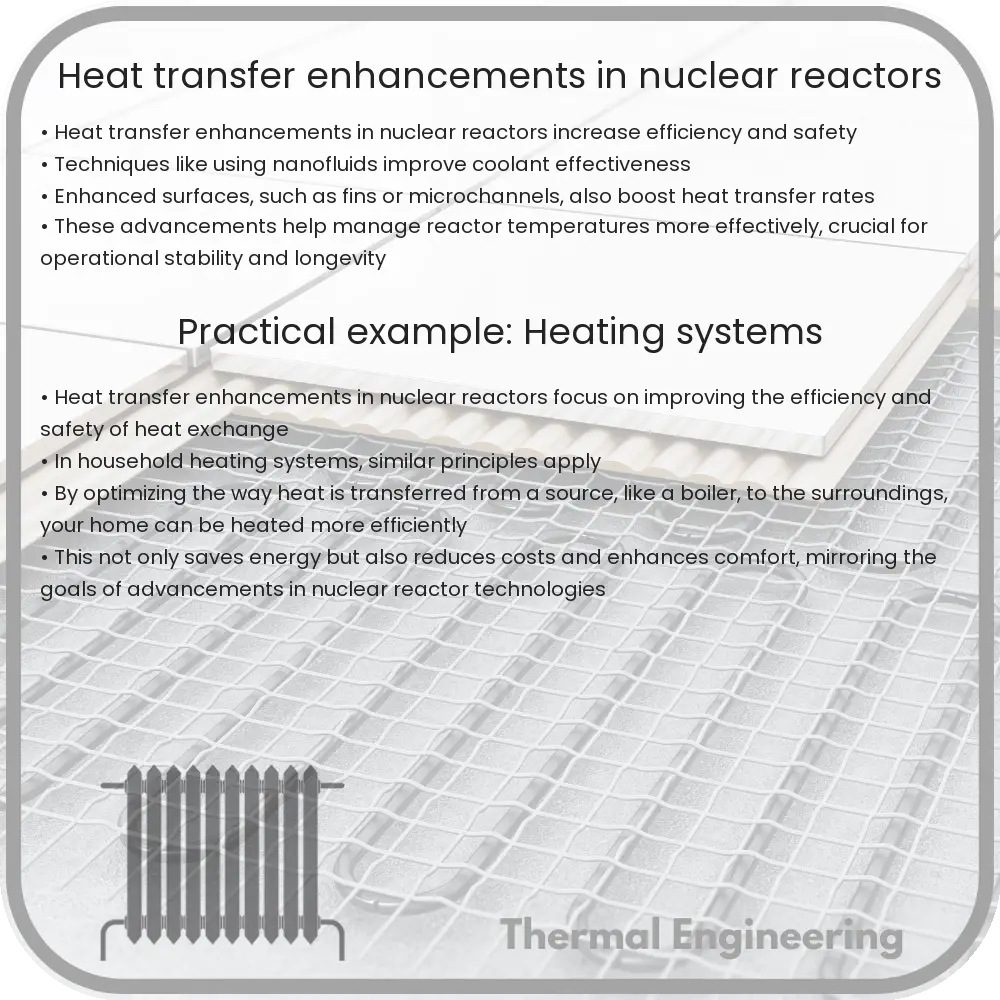Explore heat transfer enhancements in nuclear reactors for improved efficiency and safety.

Understanding Heat Transfer Enhancements in Nuclear Reactors
Heat transfer is a critical aspect of nuclear reactor design and operation, impacting efficiency, safety, and longevity. In this article, we will explore how engineers enhance heat transfer within nuclear reactors to optimize their performance and ensure safety standards are met.
Basics of Heat Transfer in Nuclear Reactors
Nuclear reactors generate heat through nuclear fission—the process where the nucleus of an atom splits into smaller parts, releasing a significant amount of energy. Efficiently managing this heat is essential for generating electricity and maintaining the structural integrity of the reactor.
Heat transfer in nuclear reactors primarily happens through conduction, convection, and radiation. Enhancements in heat transfer focus on improving these mechanisms to increase the reactor’s thermal efficiency and safety.
Heat Transfer Enhancement Techniques
Engineers employ various techniques to enhance heat transfer in nuclear reactors. These include:
- Using Heat Transfer Coatings: Special coatings are applied to fuel cladding and other internal surfaces to improve heat transfer rates. These coatings can reduce thermal resistance and enhance the heat conduction pathway from the fuel to the coolant.
- Optimizing Coolant Flow: The coolant flow rate and pattern are optimized to maximize heat absorption from the reactor core. Advanced computational models help in designing coolant channels that ensure the most effective heat transfer.
- Increasing Surface Area: Increasing the surface area over which heat transfer occurs can significantly enhance the efficiency of the heat exchange process. This can be achieved by incorporating fins or other extended surfaces on heat exchangers.
- Implementing Nanofluids: Nanofluids, which are fluids containing nanoparticles, can be used as coolants. These particles significantly increase the thermal conductivity of the fluid, thus enhancing heat transfer.
Impact of Enhanced Heat Transfer
The enhancement of heat transfer in nuclear reactors has several beneficial impacts:
- Increased Efficiency: Better heat transfer leads to more efficient steam generation, which can increase the electrical output of the power plant.
- Enhanced Safety: Efficient heat removal from the reactor core reduces the risk of overheating and potential meltdowns, thus enhancing the overall safety of the nuclear reactor.
- Extended Reactor Life: By reducing thermal stresses on the reactor components, enhanced heat transfer can contribute to longer operational lives of reactors.
Challenges and Future Directions
While enhancing heat transfer within nuclear reactors presents many benefits, it also poses challenges. These include the cost of implementing new technologies, potential impacts on reactor operations, and the reliability and durability of new materials and designs.
Future research in this field is likely to focus on developing more advanced materials and technologies, such as superconducting materials or innovative coolant compounds, that can operate under extreme conditions while providing superior heat transfer capabilities.
As nuclear power continues to be a critical component of the global energy mix, advancements in heat transfer technologies will play a key role in ensuring these facilities are both efficient and safe.